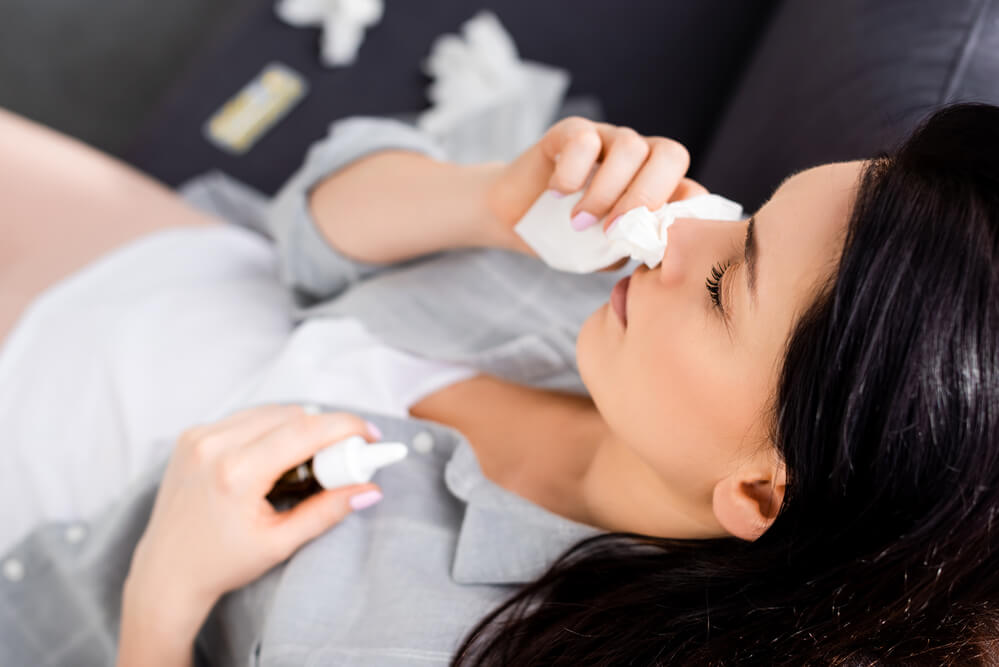Allergies caused by mites

Foto: HayDmitriy / depositphotos.com
Dust mites are found almost everywhere in the world and are found almost exclusively in human homes. They feed on our skin scales and are in principle harmless to humans. Dangerous, however, are the excrements of the animals, which can sometimes cause allergies in humans. In Germany, for example, almost every tenth citizen suffers from the consequences of a house dust allergy.
How does an allergy develop?
In Germany, around one in three people is affected by an allergy – and the trend is rising. When basically harmless substances suddenly trigger violent immune reactions in the body, this is known as an allergy. The reason is an overreaction of our immune system to a foreign substance. In technical jargon, substances that are capable of triggering an allergy are called allergens. Allergens include, for example, flower pollen, moulds, animal hair or mite faeces. As a rule, these are proteins foreign to the body. Chemical products such as cosmetics or pharmaceuticals are also suspected of triggering more allergies.
What is a house dust allergy?
Those affected react with allergic reactions to components and excretions of mites. The colloquially used term ”house dust allergy” is therefore factually misleading, as it is not the dust that is the allergen, but proteins from the excretions of the mites that adhere to the dust. These tiny animals are barely 0.1 millimetres in size and feed mainly on keratin, the main component of our skin and hair. Mattresses, sofas and other textiles in the household are the ideal habitat for them thanks to the warm and humid climate. Since allergy sufferers are exposed to the irritants for a particularly long time at night, the symptoms manifest themselves most severely in the morning.
What symptoms does the house dust allergy cause?
A house dust allergy does not always manifest itself through allergic reactions. Although many people are by definition allergic to mites, they can cope with everyday life without any problems. Some people, however, regularly suffer from the typical consequences of a house dust allergy, which are symptomatically similar to hay fever. The symptoms are particularly pronounced at the start of the heating season during the winter months. During the summer, mites multiply rapidly thanks to the optimal conditions. They die off in the cold and dry autumn. The convection caused by the heating system enters the breathing air with the house dust. Inhaled, they cause the typical symptoms of a house dust allergy.
The symptoms include:
- skin reactions, redness, itching and eczema
- difficult breathing, whistling breath
- stuffy or runny nose
- frequent sneezing (allergic rhinitis)
- watery, reddened or itching eyes (allergic conjunctivitis)
These symptoms are most pronounced at night and in the early morning, when allergy sufferers have been exposed to the allergens on the mattress over a longer period of time. Due to the preloading of the respiratory organs, symptoms also appear during physical exertion. Predominantly children are affected by such breathing problems. Symptoms also occur predominantly when dust is whirled into the air by dusting or sucking and gets into the mucous membranes. Basically, an increased occurrence of mites in the home increases the symptoms.
How can a house dust allergy be treated?
In the case of a house dust allergy, hyposensitization is a possible treatment. The aim of therapy is to suppress an allergic reaction by accustoming the immune system to the allergen. To achieve this, the skin is slowly confronted with the allergen over several sessions with increasing doses. This is done either by subcutaneous injection or absorption by tablet through the oral mucosa. Such immunotherapy lasts between three and five years.
Bestsellers
In principle, allergy sufferers are advised to follow strict hygiene measures. Although it is not possible to banish the mites completely from the home, the population can be minimized by daily cleaning of upholstered furniture as well as bed covers, regular airing and an anti-mite spray. Special protective covers for mattresses retain allergens and prevent contact during sleep. The use of special air purifiers is also particularly effective. Air purifiers equipped with a HEPA filter filter the smallest suspended particles from the air we breathe, such as dust particles, mite excrement or pollen.
Letzte Aktualisierung der Amazon-Preise am 2024-11-28 | Preise können sich inzwischen geändert haben Affiliate Links & Bilder von der Amazon Product Advertising API | Preis inkl. MwSt., zzgl. Versandkosten
